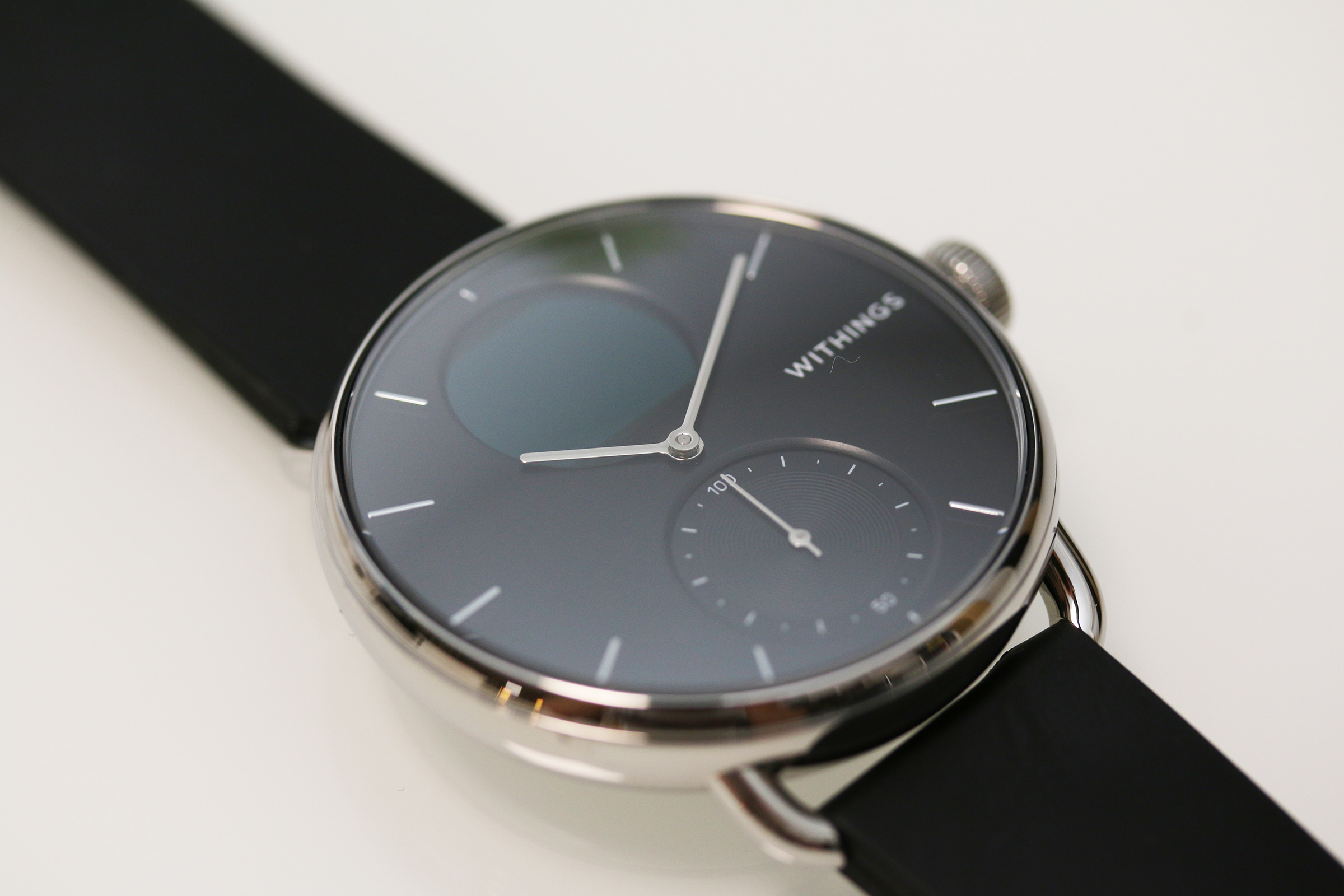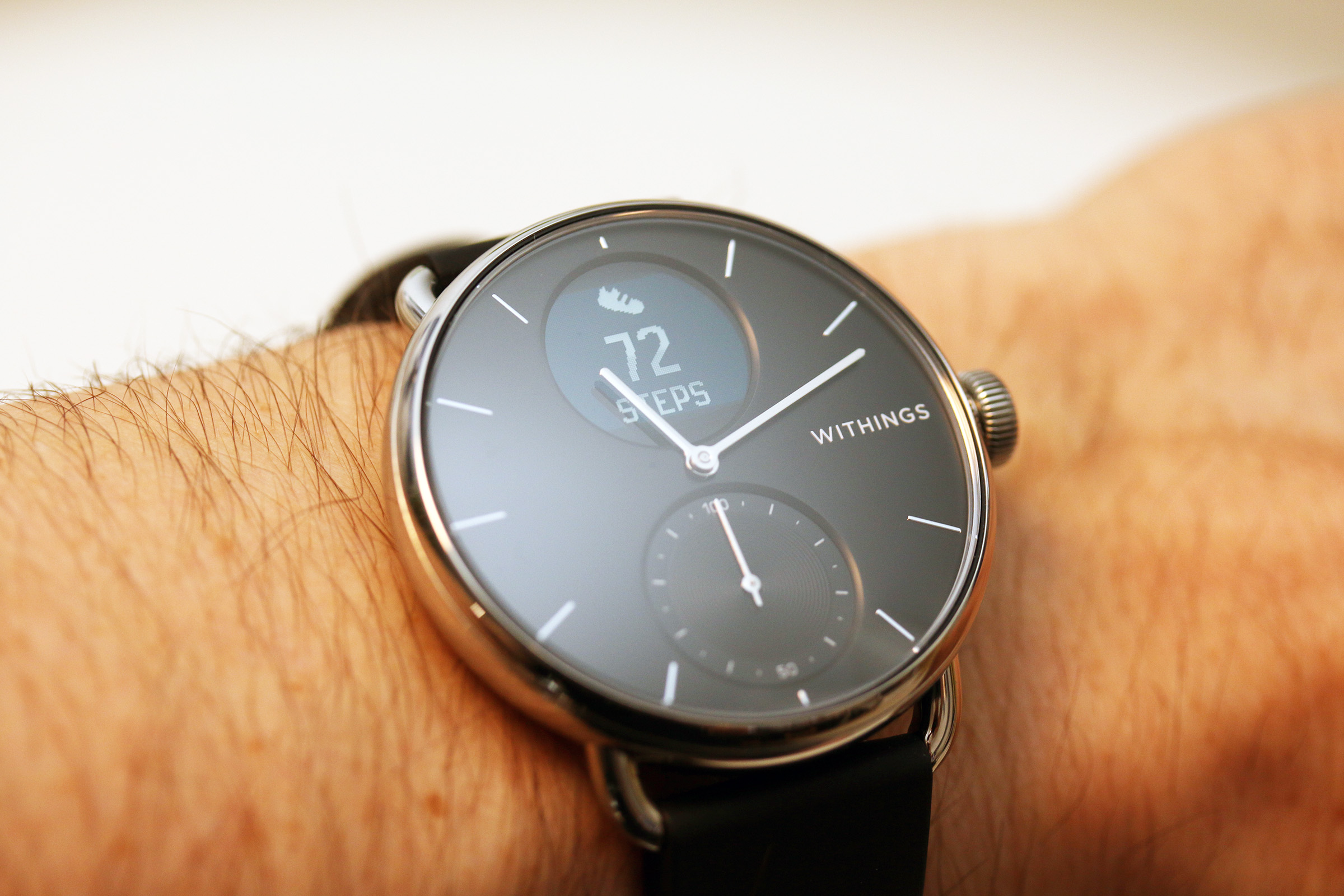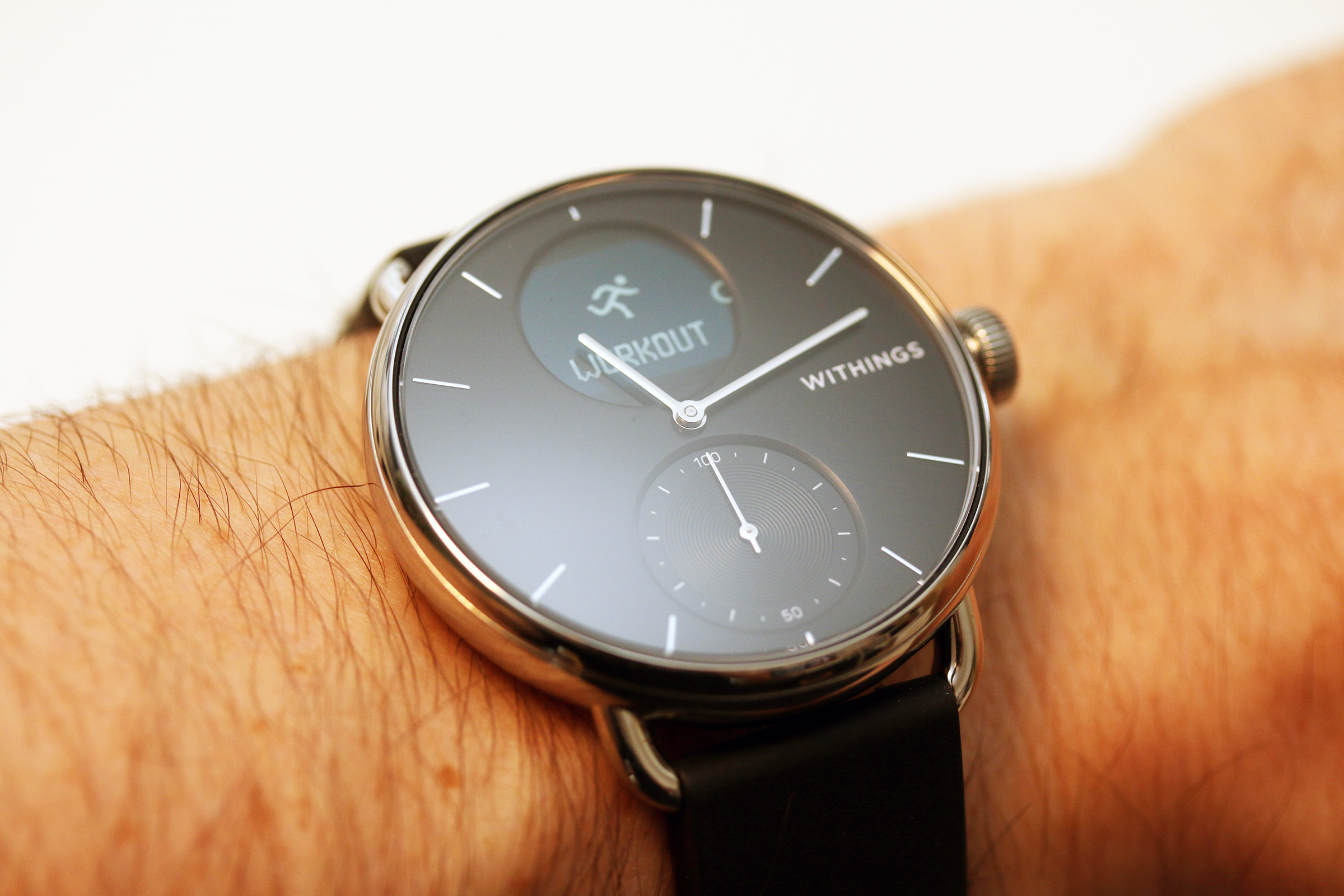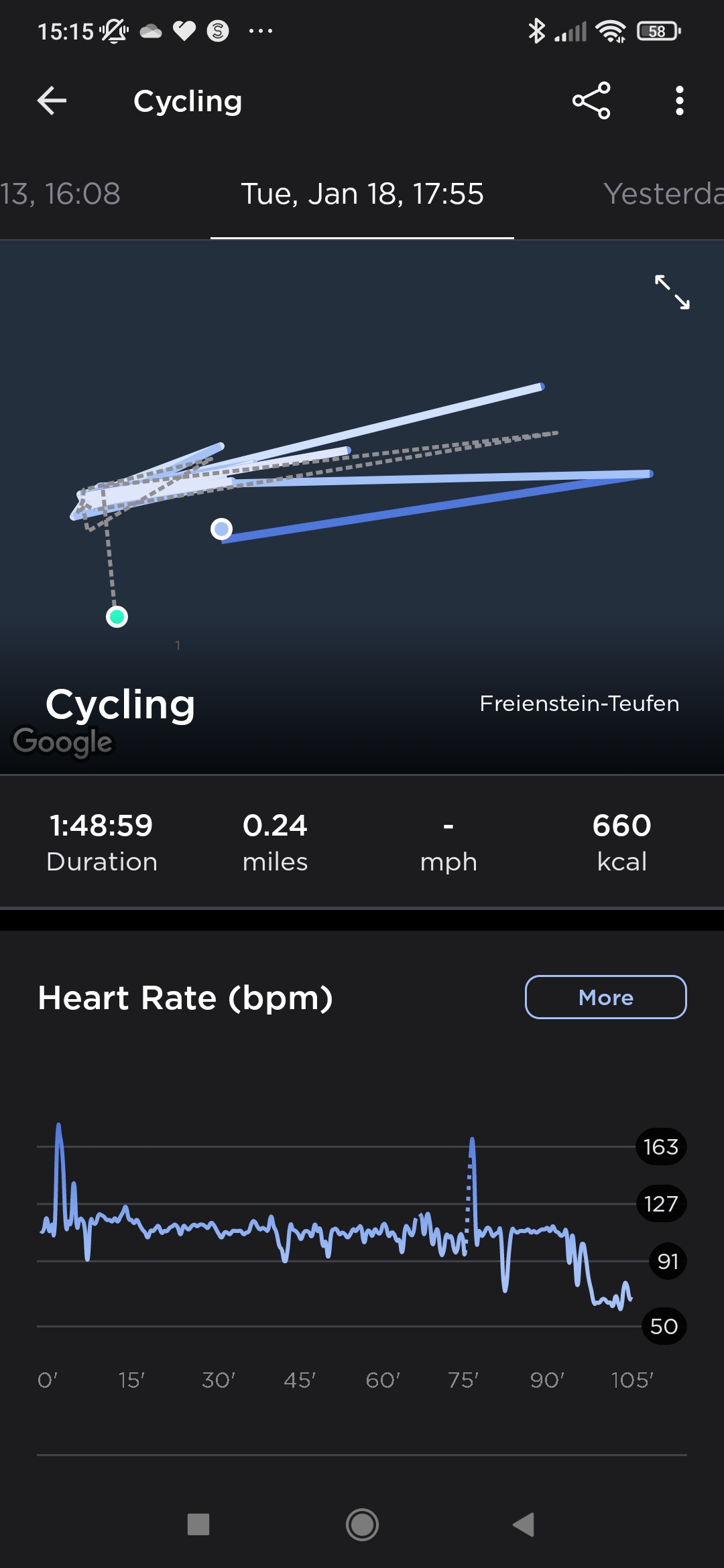Introduction
I’ve been toying around with the though of buying a smart watch for quite a while now. Although, I feel like specifying on that in a little more detail. When it comes to the usual suspects, such as Apple Watch, FitBit, Garmin Fenix, you name it, those things were anything but attractive to me. As my phone keeps stressing me out enough during the day, I don’t need another vibrating or even beeping device attached to my body. Therefore, what I’ve been looking for was something that’s more along the lines of a watch that is smart than a smart watch. On top of that I prefer timeless aesthetics of an analogue chronometer over yet another enclosed capacitive, touch sensitive screen, hiding away a minicomputer.
Being Swiss I’m aware of the fact that Tag Heuer makes some beautiful smart watches, but since I already own a mechanical Tag Heuer chronometer, I really didn’t feel like investing 2’000 bucks or even more. As much as I like the looks of the Tag Heuer smart watches it is my opinion that combining something that is supposed to be timeless with technology that gets dated really quickly is a recipe for creating a pretty expensive toy.
Since my line of reasoning keeps narrowing the field of possible contenders down continuously there aren’t many left at this point. And well, yes, you guessed it right; it seems like the Withings ScanWatch – to me – is a reasonable compromise of design, functionality, and price.
So, for now this is enough jibber jabber. Let me take you on a tour around this thing and find out how smart this watch really is.
Packaging
As one might expect from a product at this price point the Withings Scan Watch ships in a nice and fitting cardboard box. The front features an image of the watch itself, whereas on the backside there’s an overview on the key functionality.



Contents
Once unfolded, a little felt pouch is revealed and underneath lies a quick installation guide as well as some additional documentation. Regarding the installtion you can certainly have a look at the printed booklet, but at a later stage the app will guide you through the process excellently.



Design
Although the Withings Scan Watch is a smart watch it actually looks like watch and not like yet another mini computer for your wrist. What you get is a sleek and simple looking chronometer and at first glance you wouldn’t even notice that it’s a smart watch, especially as long as the round PMOLED display in the top half remains dark. The timeless round design combined with a slim stainless steel bezel and the fact that you can get this watch in 38mm diameter flavour make it fit even my extremely narrow wrist that’s a mere 54mm wide. There is only one thing I’d like to see changed and that concerns the logo, which has been placed rather prominently. Another silver bar instead of the logo would make the watch look even classier.
As you can see from the images I opted for the model with black clock face, silver, stainless steel bezel and black silicone wrist strap. Withings offers quite a few different color combinations, whereas you can choose from black, white or blue clock faces, silver and rose gold bezels as well as an entire slew of wrist bands made even from different materials such as leather, stainless steel and silicone. This link takes you to the Withings webpage displaying all the different color combinations.


Specifications
| Price – Amazon affiliate link | $299.99 – Withings ScanWatch |
| Color enclosure | silver |
| Color wrist strap | black, silver |
| Display | PMOLED |
| Operating System | proprietary |
| Compatibility | Android 6+, iOS 10+ |
| Interface | Bluetooth |
| Heart rate monitor | integrated |
| Measurements | Timer, Stop Watch, Step Counter, Sleep Monitoring, Oximeter, Calorie Counter, Barometric Altitude, Heart Rate, ECG |
| Other functionality | Alarm Clock, Date, Notifications on Messages and Calls (Android/iOS) |
| On-time | up to 30 days |
| Glass | Sapphire glass |
| Material enclosure | Stainless steel |
| Dimensions | 42x42x13.7mm / 38.4×38.4×13.2mm |
| Material wrist band | Fluoroelastomer |
| Width wrist band | 20 or 18mm |
| Weight | 83 or 58g |
| Divers | Waterproof up to 50m |
Features
When it comes to the smart part of the Withings Scan Watch there is quite a few things this watch can do. It ranges from detecting irregular heartbeat and breathing disturbances, taking an on-demand ECG, measuring oxygen saturation as well as heartrate, activity, and sleep tracking.
Before writing this part of the review, I’ve been testing this watch for almost two weeks and during that time I believe I’ve put it through its paces, as I’ve worn it 24/7 and used it for physical activity.
Comfort and Sleep Tracking
The watch is comfortable to wear. The silicone wrist band is soft and although it needs to be wrapped around your wrist tightly, it didn’t bother me, even while in bed trying to fall asleep. Wearing comforts are an important aspect of this product as an uncomfortable smart watch simply wouldn’t be worn to bed.
Talking about wearing the Withings Scan Watch to bed it makes sense to talk about its capability of monitoring your sleep, detecting light and deep sleep phases as well as interruptions. The Scan Watch analyses your sleep mainly using heart rate as an indicator, which is then plotted and displayed as a graph in the Withings Health Mate app. On top of that the app calculates a sleep score, which makes the quality of sleep you get every night comparable. Furthermore, the app classifies depth of sleep as well as regularity and it lists interruptions plus duration. In my case it feels like the results confirm how I’d personally categorize my night sleep as well. This could implie that the data gathered is useless, since it simply confirms what we already know and where’s the value in that? Well, since I also get insight into when I get deep or light sleep, plus I see for how long I’ve rested in those phases, it makes me think about how I can optimize my sleep, trying new routines before going to bed for instance. And that is anything but useless. In the app you’ll also find suggestions as to what you can do to improve your sleep – in case you haven’t already been aware of that. On another note, it’s also very well worth noting that the sleep score is a combination of sleep duration, regularity, depth, and interruptions with duration adding to the total score the most. In other words, this means that the product management team at Withings, which includes researchers and scientists, concluded that sleep duration is most important followed by regularity.
To analyse one’s light and deep sleep phases it needs to be mentioned that the Withings Scan Watch is no medical grade device, claiming extremely high accuracy. In fact, there are tests comparing the Withings Scan Watch with such devices, showing that this particular smart watch is correct in “guessing” the sleep phases in about two thirds of the cases. This might sound bad, but overall, it’s a solid result and it does allow one to get a deeper understanding of the quality of sleep you’re getting and what can possibly be optimized. In the health mate app, all results are chronologically stored, which allows you to identify trends in you sleep pattern. If you want to more about how precise the Withing Scan Watch can track your sleep I’d recommend this video from The Quantified Scientist over on YouTube.
Heart Rate and Workouts
During everyday life the heart rate monitor does its job perfectly fine, reporting numbers that are almost identical to the ones I’ve measured using a Garmin heart rate strap. While exercising on the other hand I noticed dropouts. They’re tending to occur after a short rest period. For example, every time I step off my indoor cycling setup to go fill up a water bottle or head to the kitchen to get something from the fridge and the get back on the trainer. In that scenario the Withings Scan Watch tends to report far too low for quite a while. On top that, most of the time, it fluctuates until after what feels like 15 minutes the readings stabilize. If you rely on precise heart rate data for your exercise, then I’d recommend a heart rate strap that is made to do exactly that job, but if for you it suffices to extract trends from your heart rate data, then the Scan Watch does a good enough job.
Feeding Google the question whether there is a possibility to connect a heart rate strap to the Withings Scan Watch I’m forwarded to the Withing support forums, where customers are asking the same question. In other words, it’s currently not possible to do so but there seems to be demand from the customer side, which might make Withings consider implementing a feature that would allow users to possibly connect sensors that support the Bluetooth LE or Ant+ standard.
ECG and Breathing Disturbances
Due to the sensors used in this smart watch it’s possible to conduct an ECG (Electrocardiogram). Therefore, the ScanWatch can detect arterial fibrillation (A-fib), which coincides with very rapid heart rhythm that can lead to blood clots in the heart. Ultimately A-fib increases the risk of stroke, heart failure as well as other heart-related complications. To conduct an ECG, you need to start the testing routing and the put the hand, on which you don’t wear the watch to touch the metal casing of the ScanWatch. This way you’ll ensure there is an electric circuit, so the watch can detect electrical signals emitted by your heart muscle.
Last but not least the Withings ScanWatch is able to detect disturbances in your breathing. Using heart rate, respiratory frequency as well as oxygen saturation and rest/activity tracking while asleep an algorithm can conclude whether you’re suffering from breathing disturbances or not. Regarding breathing scanning you can select from three different options, which are off, automatic – which is the recommended setting – and always on. In the case of “Automatic” the ScanWatch schedules scans on a quarterly basis. If you choose to have this feature set to “Always On”, the ScanWatch will conduct a breathing scan every evening.
Consclusion
What’s there to like about the Withings ScanWatch and what’s not?
Already in the introduction I’ve mentioned that I’ve been looking for a smart watch with classic design. Personally, I’m not a huge fan of wearing, what’s basically another computer screen on my wrist. Therefore, I have been more than happy to find an affordable alternative, whereas in my case that means something that’s in the lower few-hundred-dollars range. If I would have wanted to buy something unreasonably expensive, yet gorgeous looking there would have always been the offerings from TAG Heuer.
Apparently, there are compromises that must be made when deciding for a Withings ScanWatch as it’s definitely not the one smart watch to rule them all. Regarding features it stands on a middle ground with a bias towards the medical side of things when compared to other models that are more geared towards or looks. Being capable of conducting an ECG and read oxygen saturation reliably are two plus points. On top of that this smart watch’s simple and classic design certainly serves a specific market segment. So far, I find it quite disappointing that it’s simply not possible to connect additional sensors to the Withings ScanWatch. Being able to pair it with a heart rate strap, a speed sensor, a step counter, or any sensor that uses the Ant+ protocol is quite a let-down. Nonetheless there is the battery-life of almost 30 days which is simply excellent and one reason why the lithium polymer cell can power this watch for so long is that there are no power-hungry additional chips that require power all the time.
Let me give you some more of my personal thoughts as to why exactly I chose this watch over a product from Garmin or Polar, considering I exercise a lot and therefore it would only make sense that I would have decided for something geared towards sports. As I only cycle for training purposes I use a Garmin cycling computer to which all my sensors such as power meter, heart rate strap, speed and cadence sensor are paired. This combination makes for reliably gathered data from which I can draw conclusions and build on top of. Therefore, I don’t need yet another goodie that does what the cycling computer is already doing for me. I was looking for something that accompanies me during my time off the bike and – best case – shows me relevant information during my time off the bike. Along these lines it made sense for me to find a smart watch that’s inconspicuous and elegant, so I’ll actually wear it. On top of that it had to be comfortable enough for me to keep it on during the night as well to benefit from sleep tracking. In the case of the Withings ScanWatch the fact that it offers up to 30 days of battery life was the icing on the cake.






















